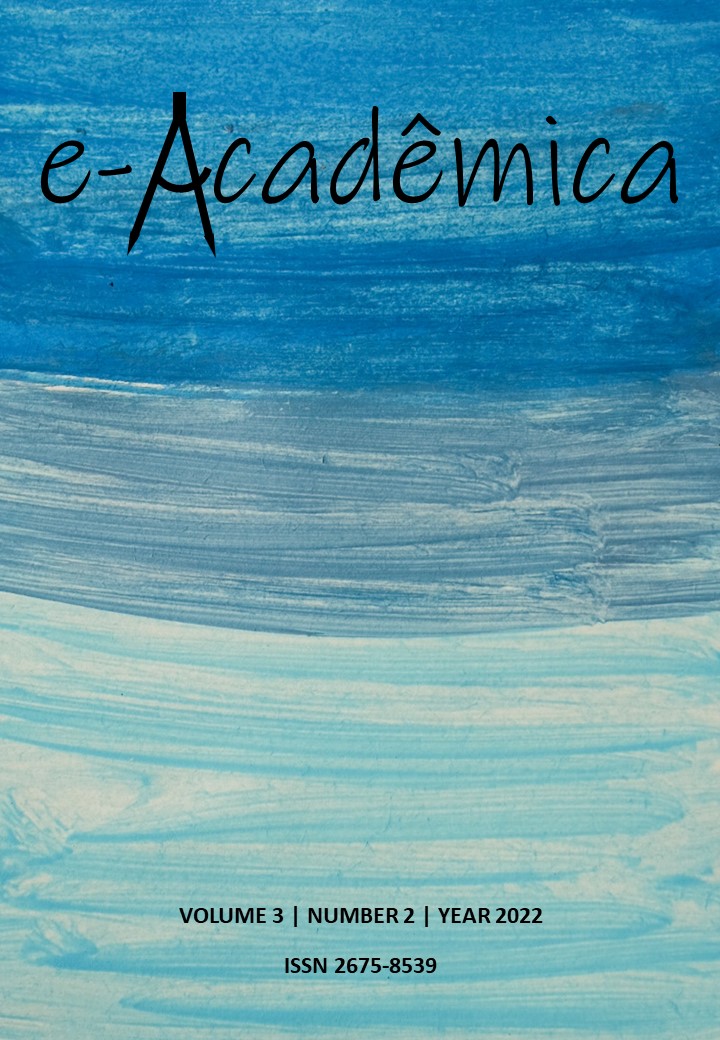Pituitary tumor apoplexy: a literature review
DOI:
https://doi.org/10.52076/eacad-v3i2.203Keywords:
Pituitary gland; Pituitary apoplexy; Pituitary neoplasms; Review literature.Abstract
Introduction: Pituitary apoplexy is a potentially fatal disorder due to acute ischemic infarction or hemorrhage of the pituitary gland. The main clinical features of this syndrome are headache, nausea, vomiting, visual impairment, altered mental status and even coma. Methodology: This is a systematic literature review of the quantitative type using the following Keywords: Adeno-Pituitary; Pituitary Apoplexy; Pituitary Neoplasms; Review of Reported Cases. Result: As the primary event involves the adenoma, the syndrome should be termed pituitary tumor apoplexy and not pituitary apoplexy. Although pituitary apoplexy occurs within pituitary adenomas, it can also occur in non-adenomatous or even normal pituitary, especially during pregnancy. Discussion: Although the terminology "subclinical pituitary apoplexy" is widely used to describe anatomopathological evidence of asymptomatic pituitary ischemia or hemorrhage, it is significant to note that pituitary apoplexy is a clinical syndrome and not an anatomopathological definition. Conclusion: although pituitary apoplexy is an uncommon complication of pituitary tumors, it must be recognized as a neuroendocrinological and neurosurgical emergency that requires immediate diagnosis and treatment, individualizing each individual to direct to conservative or more invasive therapies.
References
Sibal L, Ball S. G, Connolly V, et al. Pituitary apoplexy: a review of clinical presentation, management and outcome in 45 cases. Pituitary 2004; 7:157-163.
Elsässer Imboden P. N, De Tribolet N, Lobrinus A, et al. Apoplexy in pituitary macroadenoma: eight patients presenting in 12 months. Medicine 2005; 84:188-196.
Dubuisson A. S, Beckers A, Stevenaert A. Classical pituitary tumour apoplexy: clinical features, management and outcomes in a series of 24 patients. Clin Neurol Neurosurg 2007; 109:63-70.
Nawar R. N, AbdelMannan D, Selma W. R, Arafah B. M. Pituitary tumor apoplexy: a review. J Intensive Care Med 2008; 23:75-89.
Biousse V, Newman N. J, Oyesiku N. M. Precipitating factors in pituitary apoplexy. J Neurol Neurosurg Psychiatry 2001; 71:542-545.
Cunha-Neto M. B. C, Musolino N. R. C, Toscanini A. C. Síndrome da sela vazia e apoplexia hipofisária. In Saad MJA, Maciel RMB, Mendonça BB (Eds). Endocrinologia. São Paulo: Editora Atheneu, 2007:47-62.
Reid R. L, Quigley M. E, Yen S. S. Pituitary apoplexy. A review. Arch Neurol 1985; 42:712-719.
Wakai S, Fukushima T, Teramoto A, Sano K. Pituitary apoplexy: its incidence and clinical significance. J Neurosurg 1981; 55:187-193.
Hirano A, Tomiyasu U, Zimmerman HM. The fine structure of blood vessels in chromophobe adenoma. Acta Neuropathol (Berl) 1972; 22:200-207.
Baker H. L Jr. The angiographic delineation of sellar and parasellar masses. Radiology 1972;104:67-78.
Semple P. L, De Villiers J. C, Bowen R. M, Lopes M. B, Laws E. R. Pituitary apoplexy: do histological features influence the clinical presentation and outcome? J Neurosurg 2006; 104:931-937.
Wongpraparut N, Pleanboonlers N, Suwattee P, et al. Pituitary apoplexy in a patient with acute myeloid leukaemia and thrombocytopenia. Pituitary 2000; 3:113-116.
Han, C., Lin, S., Lu, X., Xue, L., & Wu, Z. B. (2021). Tumor-Associated Macrophages: New Horizons for Pituitary Adenoma Researches. Frontiers in Endocrinology, 12. https://doi.org/10.3389/fendo.2021.785050
García-Guzmán, B., Portocarrero-Ortiz, L., Dorantes-Argandar, A. A., & Mercado, M. (2020). Hereditary Pituitary Tumor Syndromes: Genetic and Clinical Aspects. Revista de Investigacion Clinica; Organo Del Hospital de Enfermedades de La Nutricion, 72(1), 8–18. https://doi.org/10.24875/RIC.19003186
Liu, X., Wang, R., Li, M., & Chen, G. (2021). Pituitary adenoma or pituitary neuroendocrine tumor: a narrative review of controversy and perspective. Translational Cancer Research, 10(4), 1916–1920. https://doi.org/10.21037/tcr-20-3446
Trouillas, J., Jaffrain-Rea, M.-L., Vasiljevic, A., Raverot, G., Roncaroli, F., & Villa, C. (2020). How to Classify Pituitary Neuroendocrine Tumors (PitNET)s in 2020. Cancers, 12(2), 514. https://doi.org/10.3390/cancers12020514
Banskota, S., & Adamson, D. C. (2021). Pituitary Adenomas: From Diagnosisto Therapeutics. Biomedicines, 9(5), 494. https://doi.org/10.3390/biomedicines9050494
Luo, P., Zhang, L., Yang, L., An, Z., & Tan, H. (2020). Progress in the Pathogenesis, Diagnosis, and Treatment of TSH-Secreting Pituitary Neuroendocrine Tumor. Frontiers in Endocrinology, 11. https://doi.org/10.3389/fendo.2020.580264
Downloads
Published
How to Cite
Issue
Section
License
Copyright (c) 2022 João Victor Carvalho Paz; Alexandre Augusto Gomes Alves; Beatriz da Cruz Alves; Lucas Frota Beckman; Danielle Cavalcante Cruz Almeida ; Rômulo Diego Marinho Siqueira; Amanda de Morais Melo; Natália Darvila Magalhães Nascimento; Dyego Mondego Moraes; Ana Luiza Leão Madeira de Assis ; Andressa Carvalho Murada de Sousa; Daniel de Brito Pontes; Camila Melo de Freitas; Carleany Almeida dos Santos; Rafaella Keila Moreira Paixão

This work is licensed under a Creative Commons Attribution 4.0 International License.
Autores que publicam nesta revista concordam com os seguintes termos:
1) Autores mantém os direitos autorais e concedem à revista o direito de primeira publicação, com o trabalho simultaneamente licenciado sob a Licença Creative Commons Attribution que permite o compartilhamento do trabalho com reconhecimento da autoria e publicação inicial nesta revista.
2) Autores têm autorização para assumir contratos adicionais separadamente, para distribuição não-exclusiva da versão do trabalho publicada nesta revista (ex.: publicar em repositório institucional ou como capítulo de livro), com reconhecimento de autoria e publicação inicial nesta revista.
3) Autores têm permissão e são estimulados a publicar e distribuir seu trabalho online (ex.: em repositórios institucionais ou na sua página pessoal) a qualquer ponto antes ou durante o processo editorial, já que isso pode gerar alterações produtivas, bem como aumentar o impacto e a citação do trabalho publicado.










